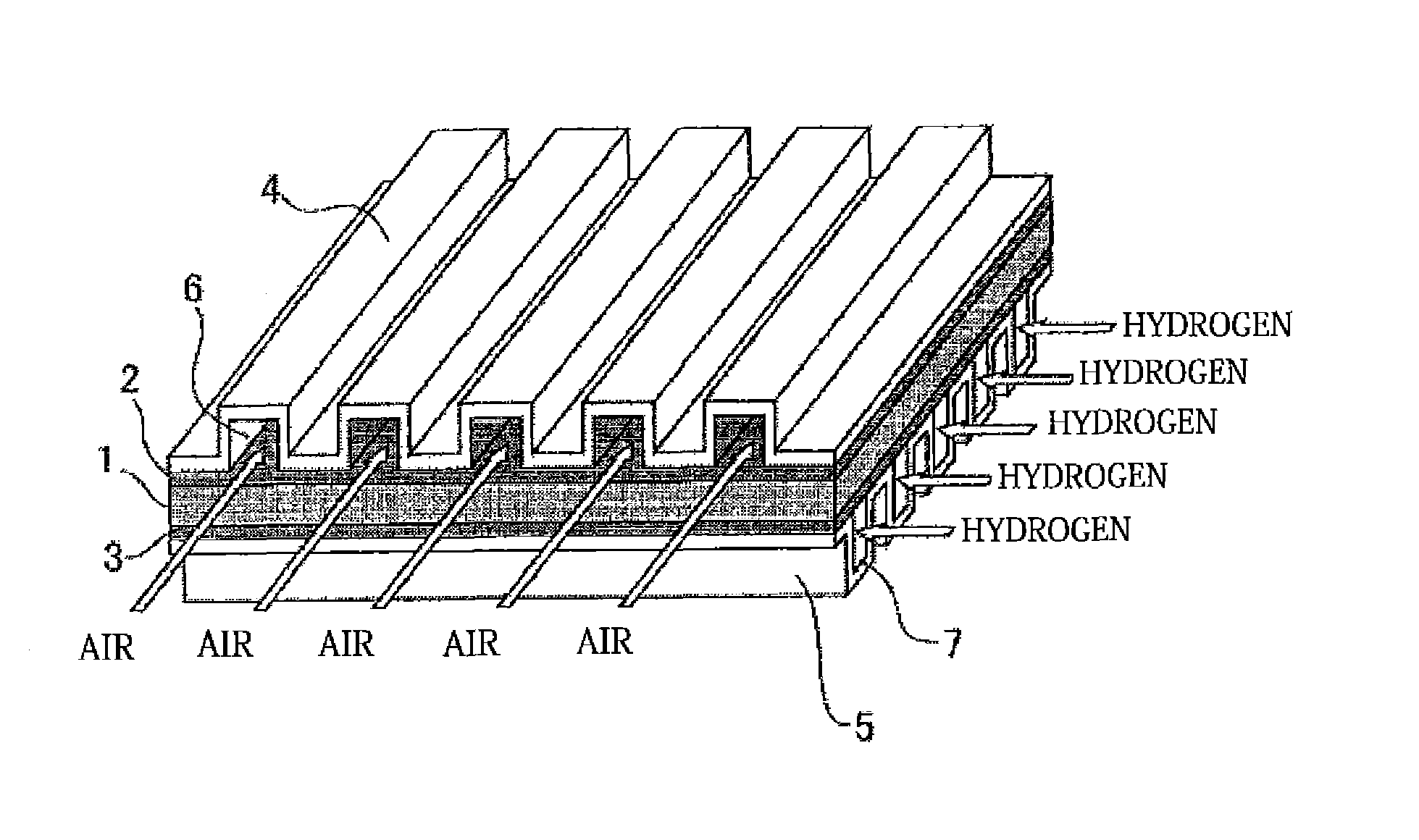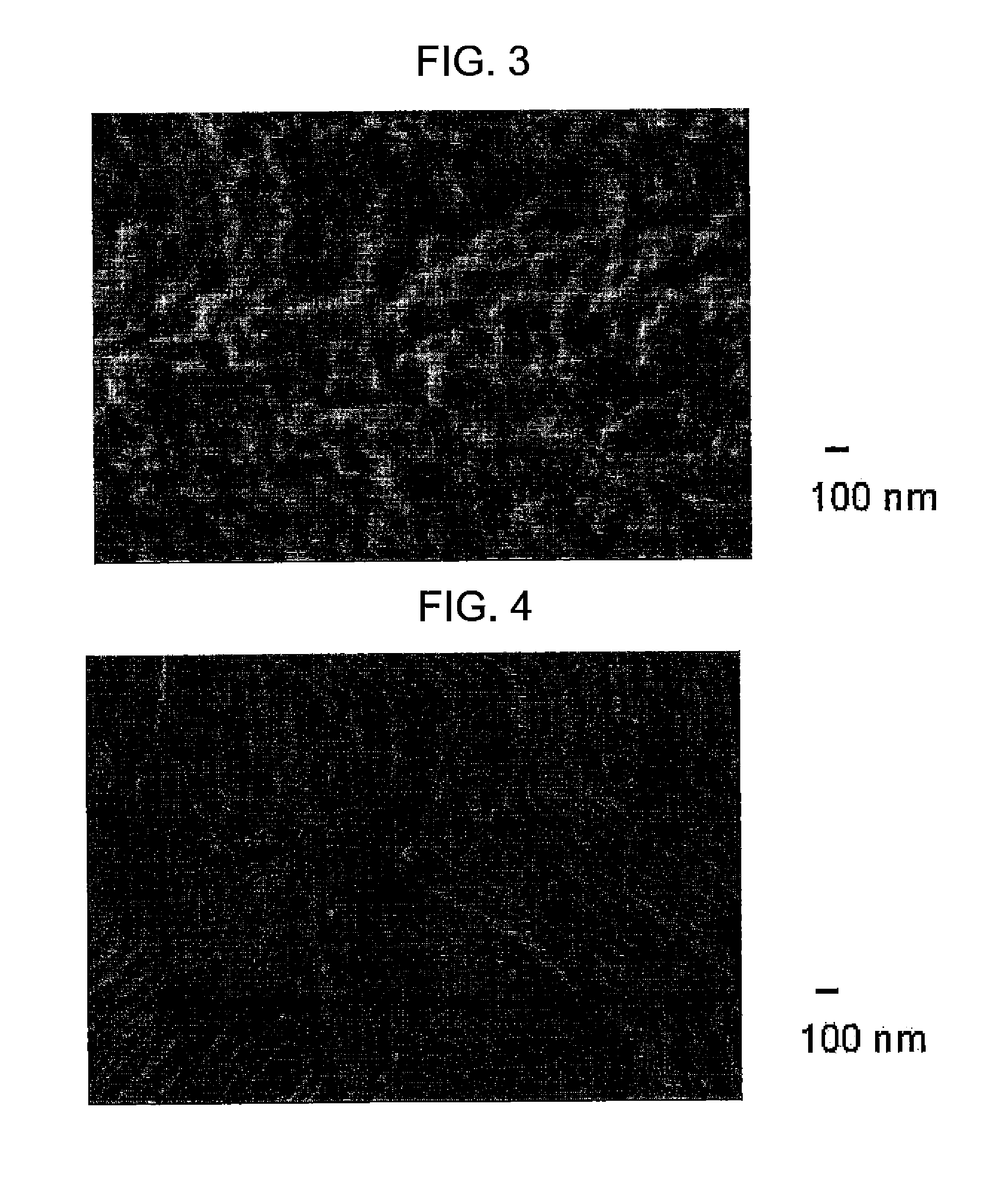Stainless steel for fuel cell separators
a fuel cell separator and stainless steel technology, applied in the direction of cell components, cell component details, instruments, etc., can solve the problems of high processing cost for channel formation, prone to breakage, and difficult to reduce in size, so as to reduce the increase in the contact resistance of stainless steel for fuel cell separator according to the present invention , the effect of good surface contact resistance characteristics
- Summary
- Abstract
- Description
- Claims
- Application Information
AI Technical Summary
Benefits of technology
Problems solved by technology
Method used
Image
Examples
example 1
[0089]A commercially available austenitic stainless steel SUS 304L having a Cr content of 18.1 mass % and a commercially available ferritic stainless steel 443CT having a Cr content of 21.1 mass % were repeatedly subjected to cold rolling, annealing, and pickling, thus yielding stainless steel sheets having thickness of 0.2 mm.
[0090]The stainless steel sheet was then annealed and was subjected to electrolytic treatment and acidizing, which was immersion in a pickling solution, under the conditions shown in Table 1. The electrolytic treatment was conducted using an electrolyte solution containing iron (II) sulfate in an amount corresponding to 1 g / L of iron ions dissolved in 3 mass % aqueous sulfuric acid with alternating current at an electric current density of 5 A / dm2 for 4.5 seconds. For comparison purposes, some samples were not subjected to electrolytic treatment and acidizing, which was immersion in a pickling solution, and some samples were subjected only to the electrolytic ...
example 2
[0095]A commercially available austenitic stainless steel SUS 304L having a Cr content of 18.1 mass % and a commercially available ferritic stainless steel SUS 443CT having a Cr content of 21.1 mass % were repeatedly subjected to cold rolling, annealing, and pickling, thus yielding stainless steel sheets having thickness of 0.2 mm. In some samples, a sheet having a thickness of 2 mm was used. The sheet having a thickness of 2 mm was subjected to mirror polishing using alumina buffing before the treatment. The samples were treated under conditions shown in Table 2. An electrolytic treatment was performed in 3 mass % aqueous sulfuric acid. An acid immersion treatment was performed in 5 mass % hydrofluoric acid, to which, depending on the condition, iron (II) sulfate in an amount corresponding to 3 g / L of iron ions was added. Further, depending on the condition, the acid immersion treatment was performed in 10 mass % hydrochloric acid.
[0096]The stainless steel thus obtained was subject...
example 3
[0102]A ferritic stainless steel SUS 443CT of the same lot (lot A) as in the examples was repeatedly subjected to cold rolling, annealing, and pickling to produce a stainless steel sheet having a thickness of 0.2 mm. The rolling reduction or the annealing temperature was altered to produce foils of different textures (lots B to E). In order to prepare a sample having trapezoidal projection structures on its polished surface, a “JFE 443CT” cold-rolled steel sheet having a thickness of 1 mm was subjected to mirror polishing using alumina buffing to prepare a lot F. The samples were then treated under conditions shown in Table 3. An electrolytic treatment was performed in 3 mass % aqueous sulfuric acid. An acid immersion treatment was performed in 5 to 10 mass % hydrofluoric acid, to which, depending on the condition, iron (II) sulfate in an amount corresponding to 3 g / L of iron ions was added.
[0103]The stainless steel thus obtained was subjected to the measurement of contact resistanc...
PUM
| Property | Measurement | Unit |
|---|---|---|
| average angle | aaaaa | aaaaa |
| average angle | aaaaa | aaaaa |
| diameter | aaaaa | aaaaa |
Abstract
Description
Claims
Application Information
 Login to View More
Login to View More - R&D
- Intellectual Property
- Life Sciences
- Materials
- Tech Scout
- Unparalleled Data Quality
- Higher Quality Content
- 60% Fewer Hallucinations
Browse by: Latest US Patents, China's latest patents, Technical Efficacy Thesaurus, Application Domain, Technology Topic, Popular Technical Reports.
© 2025 PatSnap. All rights reserved.Legal|Privacy policy|Modern Slavery Act Transparency Statement|Sitemap|About US| Contact US: help@patsnap.com



